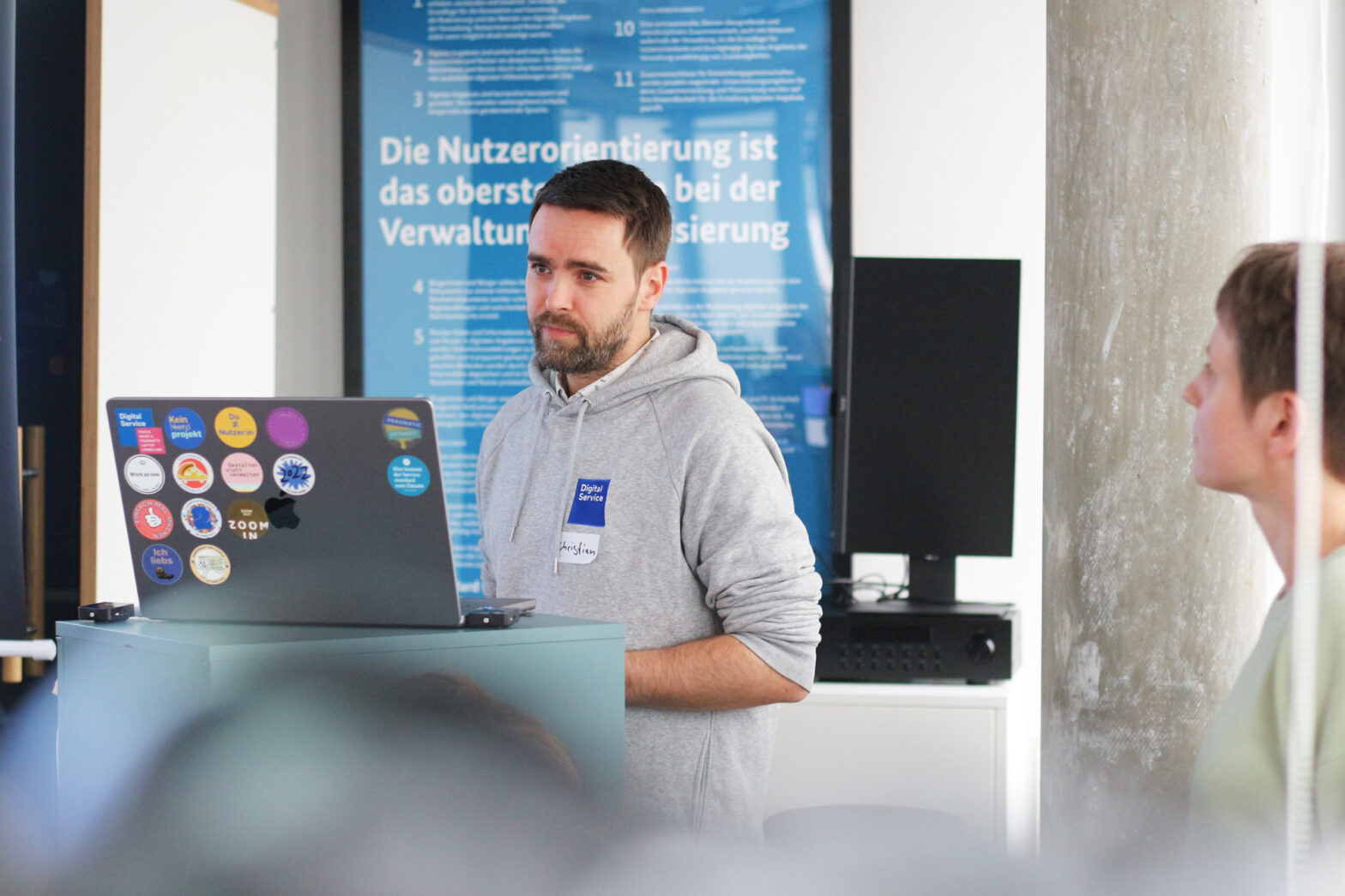This week was more outward facing than the previous ones.
On Tuesday, my co-workers Christian, Magda and I ran our first public-facing meetup. Titled ‘New approaches in the public sector’, we had about 60 participants come to our office and stay much longer than expected. After 3.5 hours, 3 talks from 5 speakers, a panel discussion and dozens of questions answered, we finished late, much after 10 pm.
The event was booked out – 60 people present and almost another 100 on the waiting list. But, kindly, people had indicated when they couldn’t come and made space for others. So, we had very few no-shows, which was noted in a key result we had set as part of our quarterly objectives.
On the morning of the day, I also took the topic to our all-hands session to tell everyone in the organisation about it. We told our colleagues that following our working-in-the-open approach, we were hosting a public-facing meetup in our office – linked to our local engagement and ongoing hiring efforts. Unfortunately, given the smaller space upstairs, we couldn’t invite everyone interested to join us for the evening. In the future, we want sufficient space for colleagues and everyone externally signing up for meetups.
Thanks to the support of a few dedicated colleagues, we had some finger food, a great room setup and recording equipment in the space. I recorded from 2 angles and with 2 microphones to ensure sufficient quality. Throughout the rest of the week, I edited and published the recordings on YouTube. In addition, I created a new channel for the meetup for people to subscribe and follow future events – independent of where they are.
Evaluating the meetup
On the morning after the meetup, we found some 15% of the participant had left a rating – giving us a 4.8 out of 5 score. That very much surpassed our expectations.
The meetup was mentioned in our objectives as follows:
A trial meet-up on public sector digital work is booked out, and the drop-out rate on the day is lower than 40%”
We met these goals easily, proving some internal doubters wrong, who had raised concerns about the usual drop-out rate at local meetups.
Our retro on Friday showed some areas for improvements – some logistical, some informational, and some data-related. We have various ideas for future topics, talks and speakers. While we had planned the event as a one-off, the demand for such a format was undeniable, and attendees expressed interest in participating in future in-person evening sessions.
To my surprise, people queued to ask for a copy of the meetup poster. I had printed only 3 and gave 2 away by the end of the evening. I will keep the remaining one for the archive. One person rightly identified the visual reference of a still widely used ‘floating file’, a paper folder that circulates within a ministry or other administrative body, thereby collecting signatures on its cover. I’m curious how we will use the grid, type and other visual elements in the design of future meetup graphics.
Discussing the difficulty of transformational design work
On Tuesday afternoon, my former boss Lou Downe and I joined a one-hour exchange on ‘how to use service design in government’, organised by Apolitical.
Over 1,000 people registered, and more than 300 showed up on the day. We both gave short inputs on the topic from our respective angles. Lou discussed their 15 principles of good service design and shared content from their book ‘Good Services’. I tested segments of a talk I want to develop for some conferences this year – on the long slog of public service design. Within 15 minutes, I shared why designing public services end-to-end, front-to-back, and across channels is so difficult and requires a lot of stamina and resilience. Mentioning some of our work and some UK government work, I illustrated my points, which led to a few good questions.
The scheduled 60 minutes needed to be longer to go deep, but we received excellent feedback the day after. The event “scored [the] highest ‘Value for Time’ score since [they] started recording in February 2022”, the Apolitical folks wrote us.
On Thursday, I sat down with the relatively recently appointed branding and design lead of the Federal Ministry of the Interior. I came prepared with a longer list of topics, including the ministry’s vivid landscape of brands, Federal government web style guides, and cross-channel brand implementation. We spoke for almost 2 hours and will need regular follow-ups. I’m glad and grateful to have a brand design counterpart in the ministry who is a senior practitioner. This could be the start of some productive collaboration.
In the design management team, we came together multiple times. We reviewed our design skill matrix once more and incorporated change suggestions, and responded to questions from the design team. And in a separate session, we sketched and compared the setups of design in 3 delivery teams – and discussed what elements we could transfer from one to the other.
What’s next
The quarter comes to an end, and also my first year at Digital Service. So I’ll reserve time to get some objectives closer to the finish line.
I also have calls with Kara and Paloma to plan our international community activities. And I’ll speak to Theo, the service assurance lead for Cyprus’ government, who ensures teams follow its service standard.
Like this week, I will interview more senior UX designers and talk to graphic designers for our open student role in the communications team.

